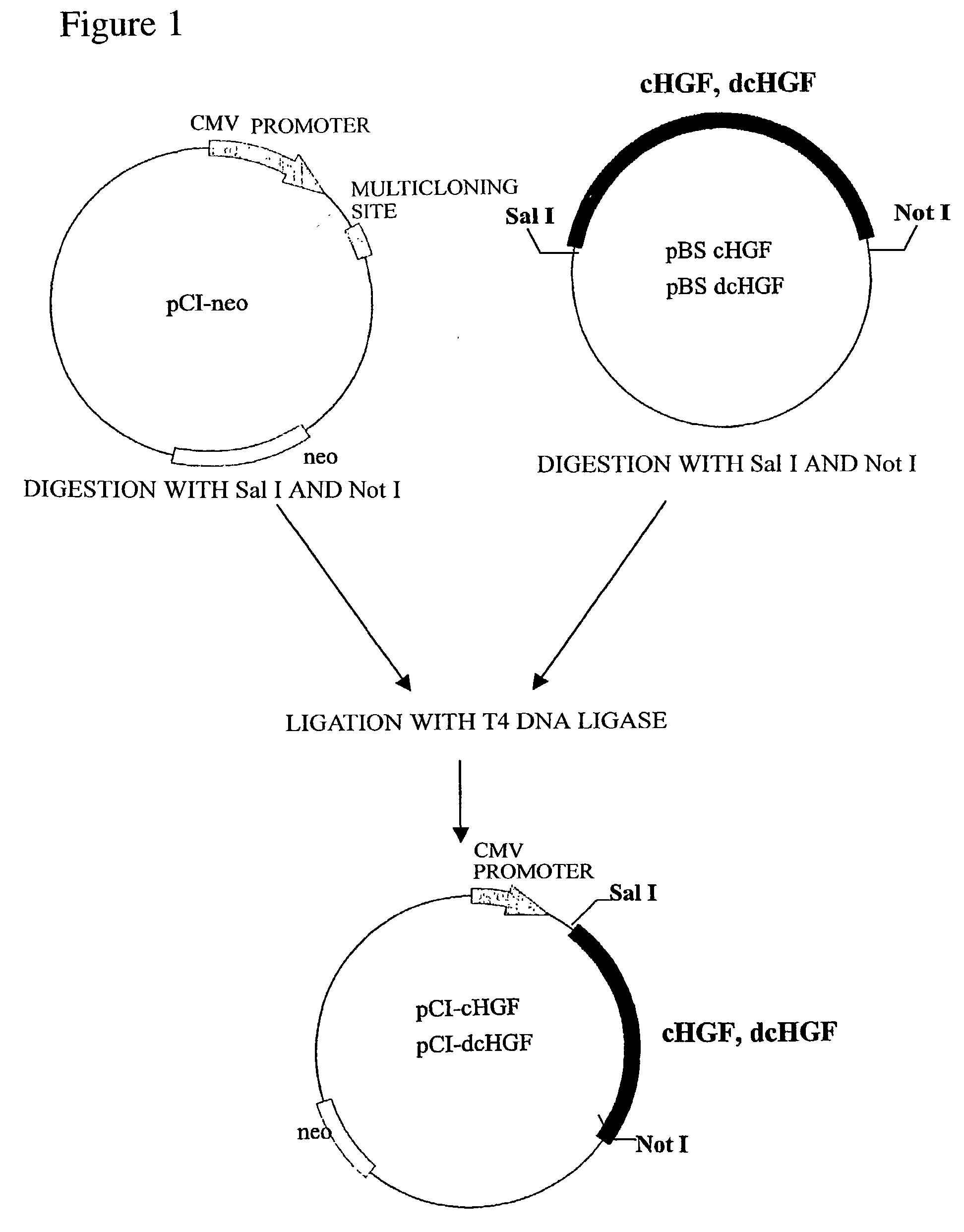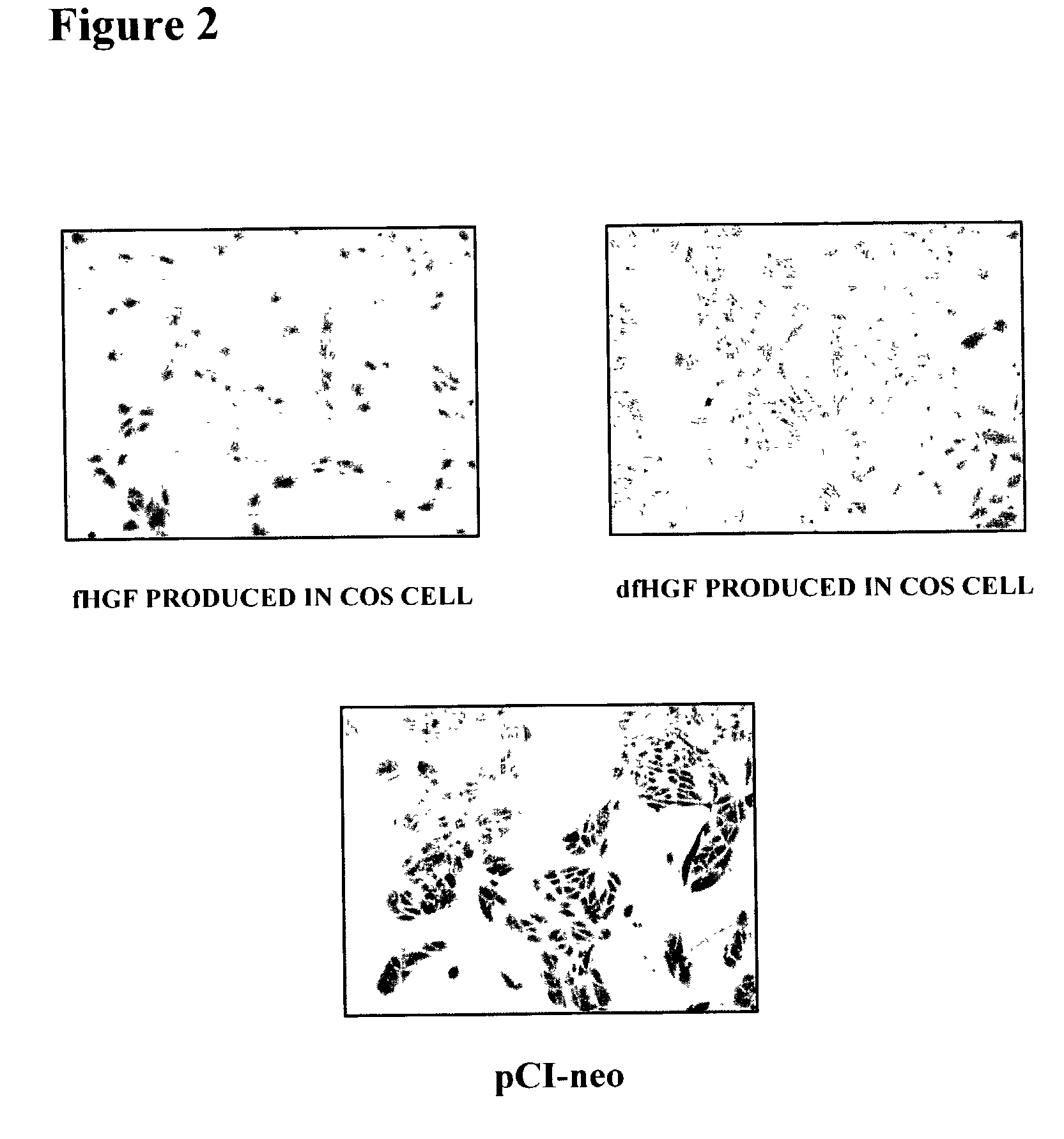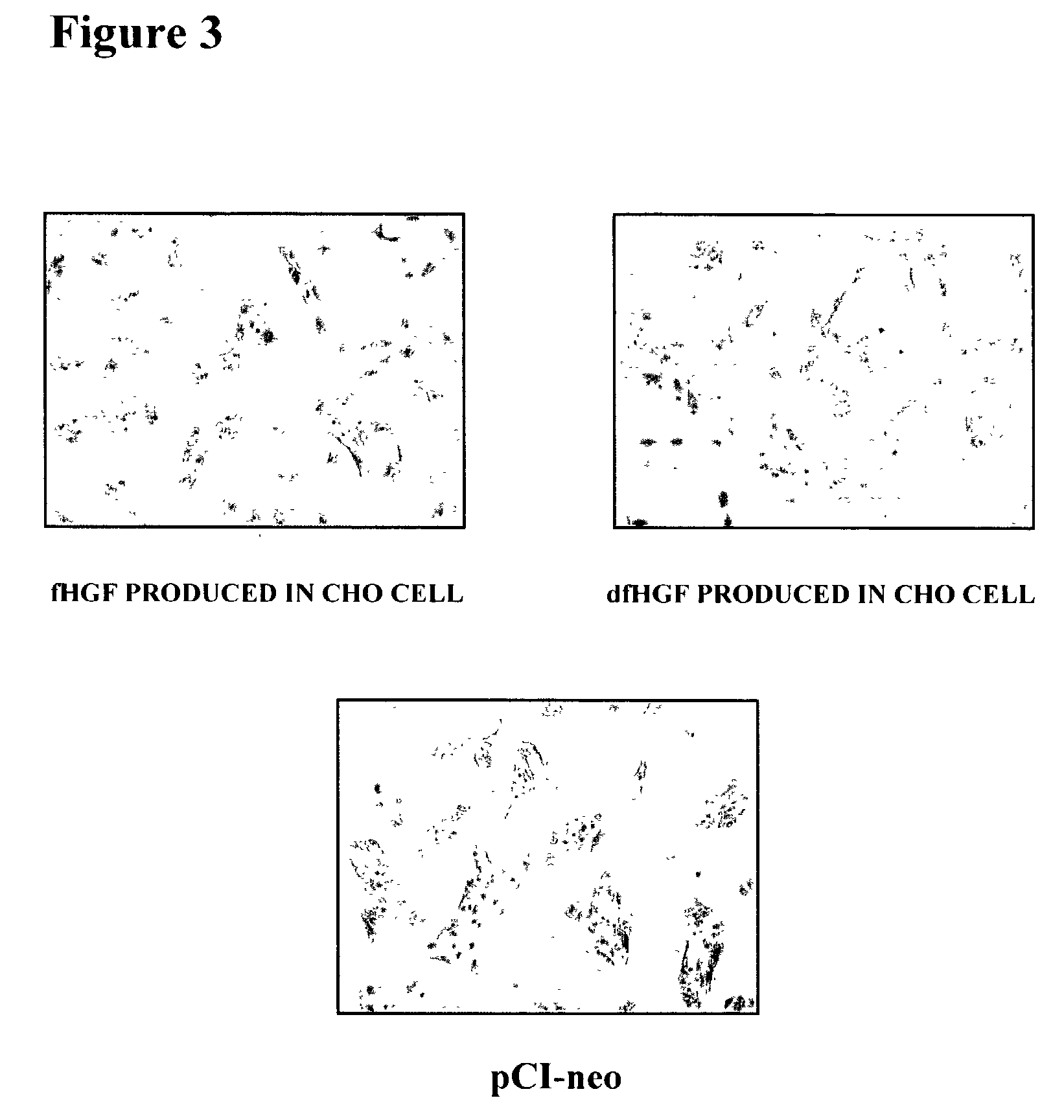Feline hepatocyte growth factor
a growth factor and feline hepatocyte technology, applied in the field of feline hepatocyte growth factor, can solve the problems of unable to prolong the treatment time, affecting the effect of long-term administration
- Summary
- Abstract
- Description
- Claims
- Application Information
AI Technical Summary
Problems solved by technology
Method used
Image
Examples
example 1
Isolation of fHGF Gene
[0092] (a) Obtainment of DNA Fragment Derived from fHGF
[0093] The total RNA was extracted from a feline leukocyte by the guanidium thiocyanate-phenol method (Trizol Reagent (Gibco-BRL). Using 3' RACE System (Gibco-BRL), cDNA was synthesized from the extracted total RNA and was then subjected to an RT-PCR reaction.
[0094] To clone the full length of a fHGF protein translated region, initially, primers were designed on the basis of a nucleotide sequence corresponding to the 5' and 3' protein untranslated regions of a hHGF gene that had already been reported, and then amplification by the RT-PCR method was attempted. However, it was difficult to obtain an amplified product having the desired size. Thus, the protein translated region was divided into two regions and amplified by the RT-PCR method. After the amplified products were cloned into plasmid vectors, the sequences were determined. The nucleotide sequences obtained were combined to obtain the full length nuc...
example 2
Production of Recombinant fHGF Protein and Recombinant dfHGF Protein Using Mammalian Cell
[0109] (a) Production of Recombinant Plasmid for Expression in Mammalian Cell Comprising DNA encoding fHGF and dfHGF
[0110] A one .mu.g sample of the plasmid obtained in Example 1 (c) and (d) was digested with 10 units of restriction enzymes Sal I and Not I (TaKaRa) at 37.degree. C. for 2 hours, and then subjected to agarose gel electrophoresis. Approximately 2.2 kbp DNA fragments of fHGF and dfHGF were purified using RECOCHIP (TaKaRa). On the other hand, 1 .mu.g of an expression vector for a mammalian cell, pCI-neo Mammalian Expression Vector (Promega), was digested with 10 units of restriction enzymes Sal I and Not I (TaKaRa) at 37.degree. C. for 2 hours, and then subjected to phenol chloroform treatment and ethanol precipitation according to a common technique so that the final concentration was maintained at 50 ng / .mu.l. The above fHGF and dfHGF DNA fragments were ligated to an expression vec...
example 3
Production of Recombinant fHGF Protein in Silkworm Larvae and Cultured Insect Cells
[0115] (a) Production of Recombinant fHGF Protein in Silkworm Larvae
[0116] By using the Superworm Service of Katakura Industries Co., Ltd., a recombinant baculovirus transformed with DNA encoding fHGF and dfHGF was obtained using the plasmid vector obtained in Example 1 (c) (FIG. 4). The viral liquid of the obtained recombinant virus was inoculated into a silkwormlarvae, and after breeding for several days, the haemolymph was collected from the silkworm body. According to a common technique, the haemolymph fluid sample was subjected to SDS-polyacrylamide electrophoresis, and then to Western Blotting analysis so as to detect the recombinant fHGF protein at the position of a molecular weight of about 80,000 to 90,000 (FIG. 5). Further, when the biological activity was determined in the manner described in Example 4, enhanced cell mobility in MDCK cell was observed. Thus, it was confirmed that the recomb...
PUM
| Property | Measurement | Unit |
|---|---|---|
| temperature | aaaaa | aaaaa |
| temperature | aaaaa | aaaaa |
| temperature | aaaaa | aaaaa |
Abstract
Description
Claims
Application Information
 Login to View More
Login to View More - R&D
- Intellectual Property
- Life Sciences
- Materials
- Tech Scout
- Unparalleled Data Quality
- Higher Quality Content
- 60% Fewer Hallucinations
Browse by: Latest US Patents, China's latest patents, Technical Efficacy Thesaurus, Application Domain, Technology Topic, Popular Technical Reports.
© 2025 PatSnap. All rights reserved.Legal|Privacy policy|Modern Slavery Act Transparency Statement|Sitemap|About US| Contact US: help@patsnap.com



